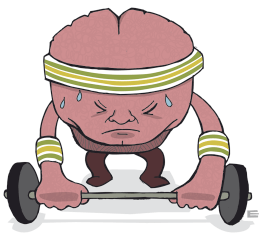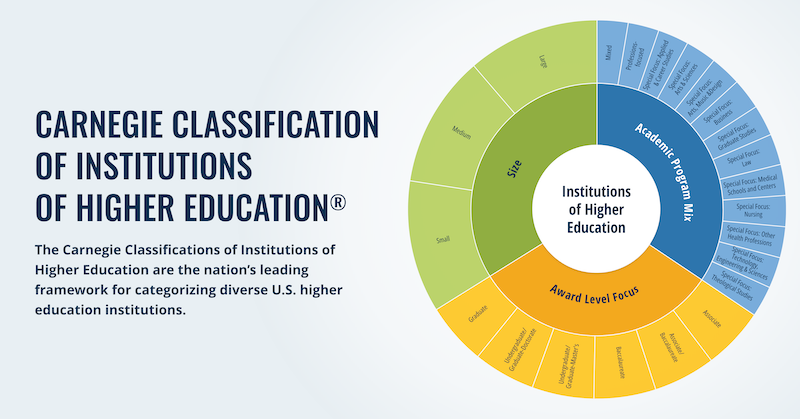When students walk into developmental math classes they are most likely carrying something weightier than their backpacks, something much more insidious. They bring with them negative mindsets that they can’t do math or that they aren’t a math person, reinforced by the history of past math classes where they experienced failures. And many bring with them the threat of stereotypes, some math-based and others defined by gender or ethnicity.
In designing two alternative mathematics pathways for students who place into college developmental math classes, Carnegie has acknowledged this student baggage as one of the key drivers that must be addressed in order to fully support student success. And they have embedded interventions into the instructional design of the two Pathways—Statway in statistics and Quantway in quantitative reasoning—to address these drivers.
The influences of stereotype threat are “powerful but not determinative.”-Claude Steele
At the annual Community College Pathways National Forum, Claude Steele, the leading expert on stereotype threat, and David Yeager, whose work on transforming student mindsets has been incorporated into the Pathways instructional system since the initial design, suggested approaches that in other settings had been shown to reverse the roles these threats play in negatively affecting the motivation and engagement of students, and thereby their educational outcomes and performance. As Steele explained, these influences are “powerful but not determinative.”
Steele provided an example of stereotype threat especially relevant to Carnegie’s work. Female and male students who excelled at math at the University of Michigan were administered the half hour section of the graduate math exam. The premise was that the gender stereotype that females weren’t as good at math as males would suppress the performance of the female students, not allowing them to do the necessary cognitive work on the exam that they were clearly capable of doing. In this case, it held true. The female students significantly underperformed compared to the male students on the same test. Although both men and women were stressed merely by having to take a test, women experienced the additional pressure of the stereotype.
To mitigate the stereotype—“the preoccupying presence” as Steele puts it—students equally as gifted as the first tested cohort were told beforehand that this particular test was one on which women always did well. Under these conditions, the female students’ performance increased to match that of men. Similar impacts have been observed for various racial/ethnic groups as well.
Steele suggests remedies for stereotype threat. These include changing the cues that educators send to students. Changing the language in a classroom can create relationships between students, advisors, and teachers that tell a student that there is no presumption that he/she lacks something needed to succeed. Instead, there is a presumption that the student can succeed.
The idea that ability is malleable is a tremendous relief to kids, and a liberating idea.
And the idea that ability is malleable is a tremendous relief to kids, and a liberating idea, Steele said. “It significantly reduces stereotype judgment.”
Carnegie is introducing the idea of malleability in the Pathways. One of the exercises in the Pathways Starting Strong package is an exercise where students read an article explaining that neuroscience shows that the brain is like a muscle and that with enough effort they can grow their brain.
Through the Starting Strong package, students who come to the Pathways thinking that they aren’t “math people,” or they don’t belong because they aren’t smart enough to succeed are supported in developing a “growth mindset.” In addition to learning from the article that intelligence is not fixed, students are given strategies to support persistence through the course, and the encouragement from the start and throughout the course that gives them the courage to use the strategies to succeed.
Yeager said that in a randomized control trial the introduction of this one article on the concept of brain growth has been shown to have a significant effect on student persistence and success. There is evidence from selected Pathways classrooms that indicate that the effect has been replicated through the Starting Strong activities as well.
The Pathways—which subsume rigorous materials, new and more engaging pedagogies, the productive persistence interventions like the use of this exercise, and the behavior and speech that support it—have produced amazing results. Students have tripled their success rates in half the time and Carnegie has been able to maintain this level of student accomplishment, even as the initiative has grown to include new colleges, new faculty, and many more students over the past three years.
Yeager said to continue to remind students that the brain is analogous to a muscle, that “the more you use it, the better it works.”

Yeager offered some specific recommendations to those attending this year’s Forum and just beginning to teach the Pathways. He said to create a class culture that supports success, not one that implies expectations of failure. He said to provide praise after accomplishment (not disassociated from effort and accomplishment), encouragement often, and continuous feedback—in class, during office hours, through emails.
He said to continue to remind students that the brain is analogous to a muscle, that “the more you use it, the better it works.” Or, “the more you practice, the smarter you become.” When students seem to get discouraged, give them a boost—indeed, there are “booster” activities included in the pedagogy that Pathway faculty use. Use phrases like: “other students say that when you come to the difficult part where you have to struggle, it is a particularly helpful and productive part of the learning process” or “when you struggle, then you’re growing.” Yeager said that the really wonderful thing about what he had discovered in his research is that the lowest achievers change the most and become some of our highest achievers.
Yeager concluded with a challenge: “Students have theories about their success,” Yeager said. “It is up to us to shift those theories” to more positive and productive ones.
May 28, 2014
As Carnegie Senior Associate Susan Headden writes in her recent report "Beginners in the Classroom," public education loses a lot of new teachers to attrition and pays a heavy price in talent and treasure.
July 27, 2014
Through the initiation and development of several Networked Improvement Communities, Carnegie has gained five key insight into what it takes to spur improvement activity in networks.







